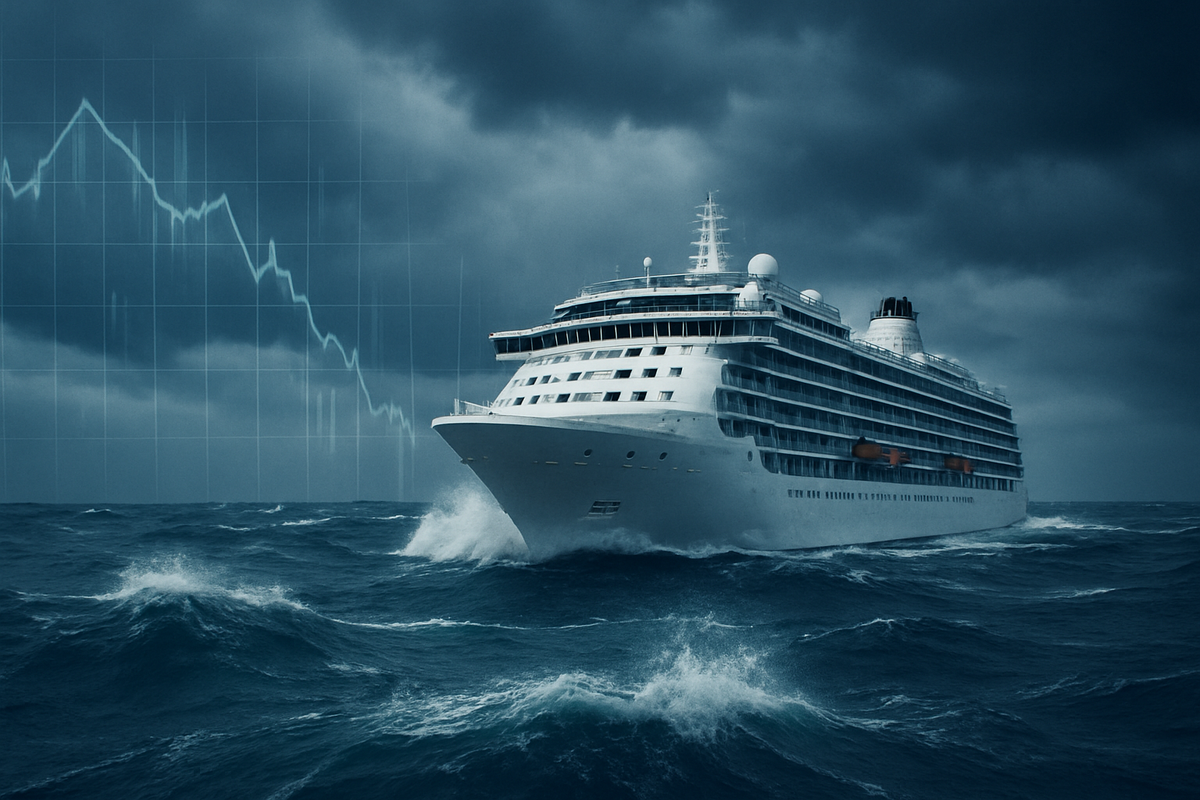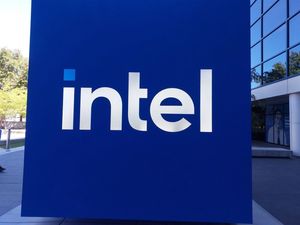
Despite a robust recovery in passenger demand and strong underlying profitability, major cruise line stocks have recently faced a downturn, leaving investors questioning the sector's immediate trajectory. Companies like Royal Caribbean Cruises (NYSE: RCL), Carnival Corporation (NYSE: CCL), and Norwegian Cruise Line Holdings (NYSE: NCLH) have seen their share prices dip, even as they report impressive earnings and optimistic long-term outlooks. This divergence highlights a market increasingly sensitive to revenue growth and broader macroeconomic pressures, suggesting that while the industry's recovery is largely intact, the path forward for its public companies may be anything but smooth.
The recent stock declines, particularly evident in late October 2025, underscore a period of heightened investor scrutiny. While cruise lines have successfully capitalized on a resurgence in leisure travel, the market's reaction to slight misses in revenue forecasts or conservative guidance adjustments indicates a cautious sentiment. This environment compels the industry to not only maintain its strong operational performance but also to navigate a complex web of economic uncertainties and evolving consumer expectations to secure sustained investor confidence.
Unpacking the Recent Dip: A Closer Look at Market Reactions
The recent volatility in cruise line stocks, particularly around late October 2025, was largely triggered by specific earnings reports and subsequent market interpretations, despite an overall narrative of industry recovery and robust demand. This period saw key players experience significant, albeit perhaps temporary, setbacks in their stock performance.
Royal Caribbean Cruises (NYSE: RCL) witnessed a notable decline of 7-9% in its stock price following its third-quarter 2025 earnings report. This drop occurred despite the company surpassing adjusted earnings per share (EPS) estimates and raising its full-year 2025 adjusted EPS guidance to an impressive $15.58-$15.63, representing a 32% year-over-year increase. The market's negative reaction stemmed primarily from revenue that slightly missed consensus forecasts ($5.14 billion reported against an expected $5.17-$5.22 billion) and fourth-quarter adjusted EPS guidance ($2.74-$2.79) that fell short of analyst expectations of $2.90. This immediate reaction highlights how sensitive investors are to top-line growth and future projections, even when profitability remains strong. Prior to this, Royal Caribbean's shares had enjoyed a healthy 26.3% rise in 2025, outperforming the broader S&P 500 index.
In a ripple effect, both Carnival Corporation (NYSE: CCL) and Norwegian Cruise Line Holdings (NYSE: NCLH) saw their shares decline by over 5% in sympathy with Royal Caribbean's earnings report. Carnival, which had previously demonstrated strong performance throughout the year—with shares trading around $29 in October 2025, close to its 52-week high of $33—had posted record revenues of $6.3 billion in its second-quarter report and adjusted net income that more more than tripled year-over-year, surpassing 2026 financial targets well ahead of schedule. As of October 2025, Carnival was still up 19.1% year-to-date, indicating that the recent dip was more a market-wide reaction to sector news rather than an intrinsic weakness in its own operations.
Norwegian Cruise Line Holdings (NYSE: NCLH) also experienced a similar sympathetic decline. Its stock performance in 2025 has been more volatile, opening at $22.94 and fluctuating between a 52-week high of $29.29 and a low of $14.21. While the company missed analysts' consensus EPS estimates in its Q2 2025 report ($0.51 EPS vs. $0.52 forecasted), it still achieved a 6.1% year-over-year revenue increase. Analyst sentiment for NCLH is mixed but generally leans towards a "Moderate Buy," with some predicting significant upside, suggesting the recent decline might be a temporary blip rather than a long-term trend. The market's initial reaction to these slight misses underscores a cautious investor environment, where even minor deviations from expectations can trigger significant stock movements.
Navigating the Winners and Losers: Corporate Fortunes in the Balance
The current financial climate, characterized by strong consumer demand juxtaposed with investor sensitivity to revenue performance, creates a dynamic landscape for cruise operators. While the recent stock declines have painted a broad stroke across the sector, the underlying operational strengths and strategic maneuvers of individual companies will ultimately determine their long-term success.
Companies like Carnival Corporation (NYSE: CCL) appear to be weathering the storm with considerable resilience. Despite the recent sympathetic dip, Carnival's robust second-quarter performance, which included record revenues and significantly increased adjusted net income, positions it favorably. The company's proactive approach in surpassing its 2026 financial targets 18 months ahead of schedule and raising its full-year guidance demonstrates strong management and operational efficiency. Its ability to maintain high booking rates and increase onboard spending suggests a healthy demand for its offerings, making it a strong contender to rebound quickly from any sector-wide downturns. Investors might view Carnival as a relatively safer bet, given its proven capacity to generate substantial revenue and profit even amidst market volatility.
Royal Caribbean Cruises (NYSE: RCL), while experiencing the most significant immediate stock decline following its Q3 2025 report, also exhibits strong fundamentals that could position it for future gains. The company's beat on adjusted EPS and its raised full-year guidance indicate strong profitability. The miss on revenue, while a market trigger, was marginal, and its capacity expansion plans (e.g., 10.3% in Q4 2025) signal confidence in sustained consumer appetite for cruising. Royal Caribbean's investments in new ships and private destinations are strategic moves designed to enhance guest experience and capture market share. The challenge for Royal Caribbean will be to ensure that its increased capacity is met with equally robust demand and that its revenue growth aligns more closely with investor expectations in future reports.
Norwegian Cruise Line Holdings (NYSE: NCLH) faces a slightly more nuanced path. While also affected by the sector-wide decline, Norwegian's proactive efforts to pay down and refinance its debt could significantly improve its financial health and positively impact future EPS. The company's volatile stock performance throughout 2025 suggests that it is more susceptible to market sentiment and macroeconomic shifts. However, growing institutional investment and a "Moderate Buy" rating from analysts, with predictions of significant upside, suggest that NCLH could be a strong performer if it can consistently meet or exceed analyst expectations and effectively manage its cost structure. The key for Norwegian will be to demonstrate consistent revenue growth and profitability while effectively reducing its debt burden to instill greater investor confidence.
Ultimately, the "winners" in this environment will be those companies that can consistently deliver on revenue targets, manage operating costs efficiently, and strategically invest in their fleets and destinations to capture the enduring consumer demand for cruises. The "losers" might be those who struggle with these fundamentals, potentially seeing their stock declines become more protracted or their ability to raise capital constrained in a more cautious market.
Broader Currents: The Wider Significance of Cruise Sector Headwinds
The recent turbulence in cruise line stocks, while immediately attributable to specific earnings reports, signals broader trends and systemic pressures affecting the leisure travel industry and the global economy. This moment provides a crucial lens through which to examine the resilience of discretionary spending, the impact of rising operational costs, and the evolving regulatory landscape.
One significant trend is the heightened investor sensitivity to revenue growth, even when profitability remains robust. This reflects a broader market sentiment that, while appreciating efficiency and cost management, places a premium on top-line expansion as a primary indicator of future health. For the cruise sector, this means that merely filling ships and generating profits might not be enough; companies must also demonstrate consistent, strong revenue increases to satisfy market expectations. This pressure could lead to more aggressive pricing strategies or innovative revenue streams, potentially impacting the consumer experience or increasing competition.
The ripple effects extend to various stakeholders. For port cities and tourism-dependent economies, particularly those reliant on cruise ship traffic, any sustained downturn or shift in cruise line strategies could have significant economic implications. For instance, in Australia, high operating costs and a challenging regulatory environment have already contributed to a substantial $1.11 billion decline in economic output for the 2024/25 season. This highlights how localized regulatory hurdles or cost pressures can have far-reaching impacts on regional economies, prompting calls for national strategies to support the industry. Suppliers to the cruise industry, from food and beverage providers to shipbuilders and maintenance companies, could also face altered demand patterns or pricing pressures if cruise lines tighten their belts.
Regulatory and policy implications are also coming into sharper focus. The Australian example underscores the need for supportive government policies that balance environmental concerns, local community interests, and economic benefits. As the industry continues to grow and expand into new regions, it will likely face increased scrutiny regarding environmental impact, labor practices, and passenger safety. Geopolitical uncertainties also play a role; regional conflicts or political instability can influence destination choices, necessitating agile route planning and contingency measures from cruise operators.
Historically, the cruise industry has demonstrated remarkable resilience, often bouncing back strongly from global crises, including economic downturns and health emergencies. The current situation, while not a crisis of that magnitude, shares similarities with periods where macroeconomic uncertainty led to cautious consumer spending. However, unlike past crises, the current headwinds are emerging against a backdrop of strong underlying demand and high booking rates for 2025 and 2026. This suggests that the challenge is less about a lack of interest in cruising and more about the delicate balance between managing expectations, controlling costs, and navigating a complex global operating environment. The industry's ability to adapt to these broader currents will be crucial for its sustained growth and profitability.
Charting the Course Ahead: What Comes Next for the Cruise Sector
The immediate future for the cruise sector, while presenting challenges, also offers avenues for strategic adaptation and potential growth. The interplay of strong consumer demand, investor expectations, and persistent macroeconomic headwinds will shape the industry's trajectory in the short and long term.
In the short term, cruise lines are likely to intensify their focus on optimizing revenue management and controlling costs. This could involve dynamic pricing strategies to maximize yields, leveraging technology like AI for personalized marketing and operational efficiencies, and negotiating favorable terms with suppliers. Companies may also prioritize destinations with lower operational costs or higher demand resilience. The market will closely watch upcoming earnings reports for signs of consistent revenue growth and improved guidance, which could help restore investor confidence and stabilize stock prices. Strategic communication regarding debt reduction efforts, particularly from companies like Norwegian Cruise Line Holdings (NYSE: NCLH), will also be crucial in reassuring the market.
Long-term possibilities hinge on the industry's ability to continue innovating and expanding its global footprint. The Cruise Lines International Association (CLIA) projects robust growth, with passenger numbers expected to reach 37.7 million in 2025 and 42 million by 2028. This growth will be fueled by significant investments in new, more efficient ships and the development of new private destinations, which offer controlled environments and enhanced guest experiences. Companies like Royal Caribbean Cruises (NYSE: RCL) are strategically increasing capacity, betting on sustained consumer appetite for cruising. The industry will also likely explore new markets and demographics, leveraging personalization to attract a broader range of travelers.
Potential strategic pivots or adaptations required include a stronger emphasis on sustainable practices to address environmental concerns and appeal to eco-conscious travelers. This could involve investments in alternative fuels, waste reduction technologies, and responsible tourism initiatives. Furthermore, cruise lines might need to diversify their offerings, potentially integrating more land-based experiences or unique itineraries to differentiate themselves in a competitive market. The ability to quickly adapt to geopolitical shifts and unforeseen events will also be paramount, necessitating flexible fleet deployment and robust crisis management protocols.
Market opportunities may emerge for companies that can effectively manage their debt, consistently beat revenue expectations, and demonstrate clear pathways to sustainable profitability. Conversely, challenges will persist for those struggling with high operating costs, regulatory burdens in key markets, or an inability to meet the market's elevated growth expectations. Potential scenarios range from a gradual recovery in stock prices as companies demonstrate consistent performance, to continued volatility if macroeconomic pressures intensify or if revenue growth remains elusive. Investors should watch for strong booking trends, favorable pricing, and clear strategies for managing capacity and costs.
Weighing Anchor: A Comprehensive Wrap-Up of the Cruise Sector's Outlook
The recent decline in cruise line stocks, despite an underlying narrative of strong demand and operational recovery, serves as a critical juncture for the sector. It highlights a market that is simultaneously optimistic about the industry's long-term prospects and acutely sensitive to short-term financial metrics, particularly revenue growth. The key takeaway from this period of volatility is that while the consumer appetite for cruising remains robust, the path to sustained investor confidence for public cruise companies is fraught with challenges, demanding meticulous financial management and strategic foresight.
Moving forward, the market will assess the resilience of the cruise sector through several lenses. The ability of major players like Carnival Corporation (NYSE: CCL), Royal Caribbean Cruises (NYSE: RCL), and Norwegian Cruise Line Holdings (NYSE: NCLH) to consistently meet or exceed revenue expectations will be paramount. Investors will be scrutinizing not just profitability, but also the pace of top-line expansion, which is increasingly viewed as a crucial indicator of future health. The industry's capacity to manage escalating operating costs—including fuel, labor, and provisions—while simultaneously investing in new, more efficient ships and attractive destinations, will be a defining factor.
The lasting impact of these headwinds will likely be a more disciplined and strategically agile cruise industry. Companies will be compelled to refine their pricing models, enhance operational efficiencies through technology adoption, and diversify their market offerings to mitigate risks associated with economic fluctuations and geopolitical events. The call for supportive regulatory environments, as seen in Australia, underscores the need for collaboration between the industry and governments to foster sustainable growth.
Investors should closely watch several indicators in the coming months. These include future earnings guidance, particularly regarding revenue projections, and any updates on debt reduction strategies from companies like Norwegian Cruise Line Holdings. Booking trends and pricing power for upcoming seasons will provide insights into consumer demand. Furthermore, any strategic announcements regarding fleet expansion, new destination developments, or advancements in sustainable cruising practices will signal the long-term vision and adaptability of these companies. While the waters may be choppy now, the cruise sector's inherent appeal and its historical resilience suggest that those companies capable of navigating these complexities effectively are well-positioned for future success.
This content is intended for informational purposes only and is not financial advice






